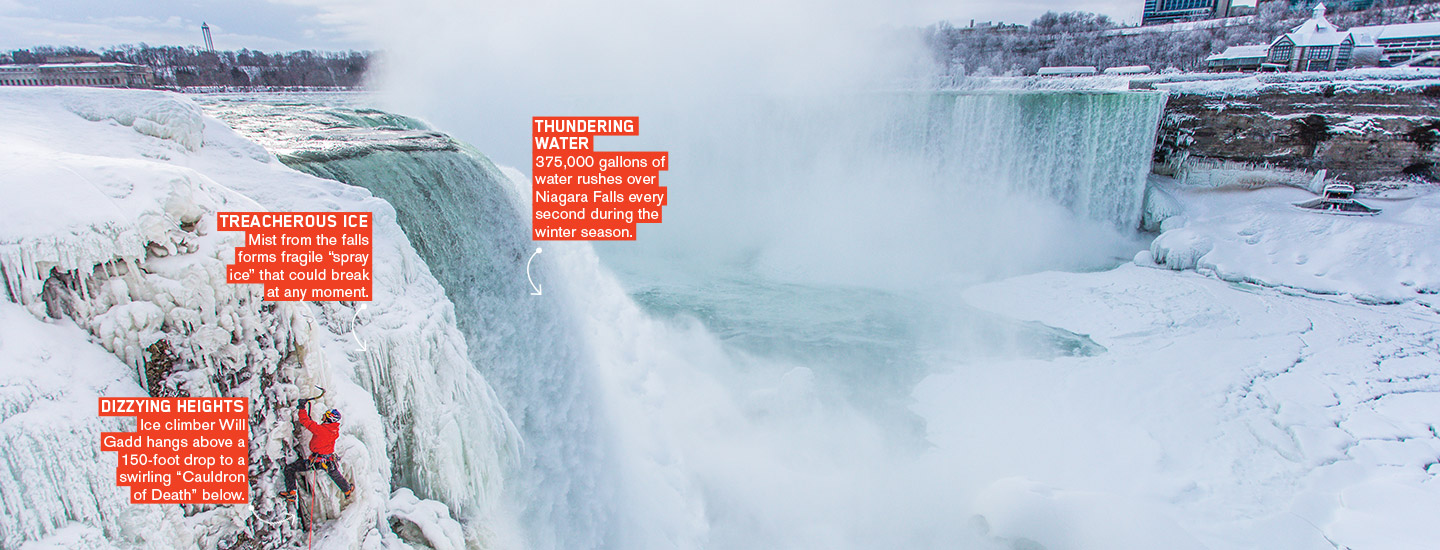Will Gadd has made many tough climbs in his life. But scaling a frozen portion of Niagara Falls was his most daring yet. It was the middle of winter, and freezing temperatures had turned part of the waterfall into ice. Gadd hung from ice picks he’d dug into the frozen falls. The cascading water was close enough for him to reach out and touch. If something went wrong, he would plummet into the swirling, icy rapids below. But he kept climbing.
Gadd’s friends call him “Captain Adventure” for a reason. Over the past few decades, he’s chased most of the thrills extreme sports have to offer. He has battled white-water rapids and paraglided over mountains. But none of his adventures compared with ice climbing one of the world’s most powerful waterfalls.
Will Gadd has made many tough climbs in his life. But his most daring was climbing a frozen section of Niagara Falls. It was the middle of winter, and freezing temperatures had turned part of the waterfall into ice. Gadd hung from ice picks he’d dug into the frozen falls. The flowing water was close enough for him to reach out and touch. If something went wrong, he would fall into the swirling, icy rapids below. But he kept climbing.
Gadd’s friends call him “Captain Adventure” for a reason. It’s not just that he’s into the thrill of extreme sports. Over the past few decades, he’s chased some of the biggest thrills that these sports offer. He has battled white-water rapids, and he’s paraglided over mountains. But none of his adventures compared with this one. He was ice climbing one of the world’s most powerful waterfalls.

